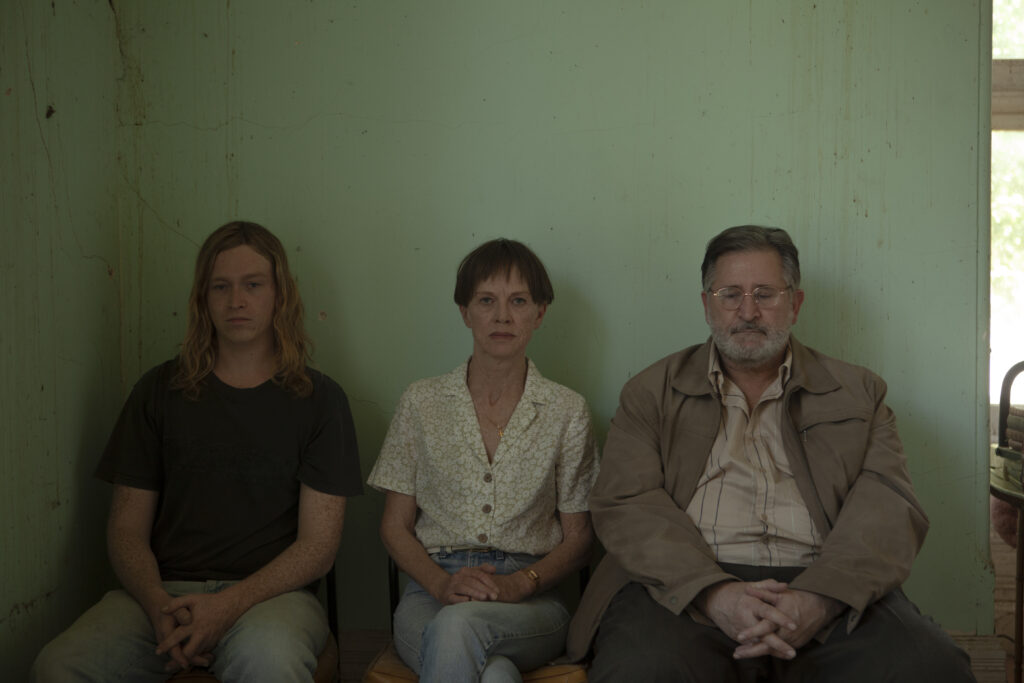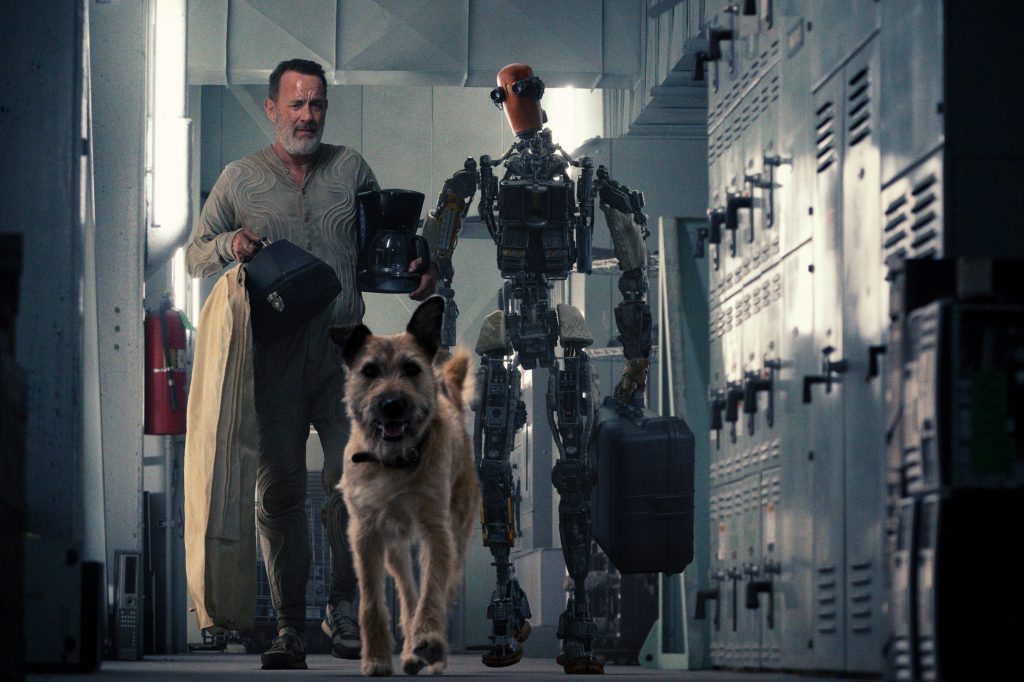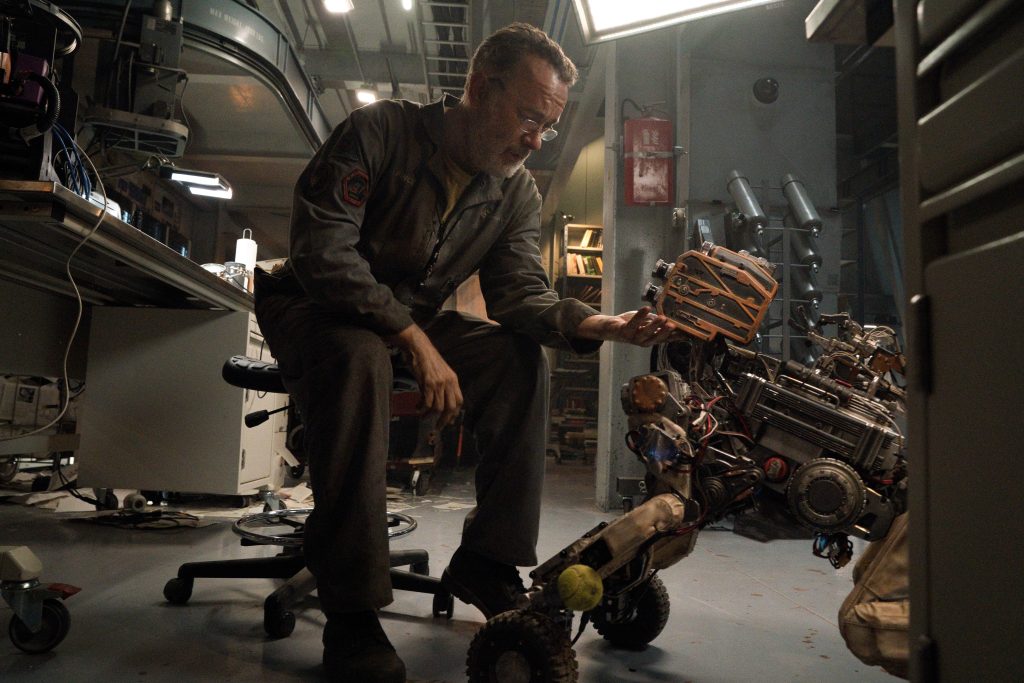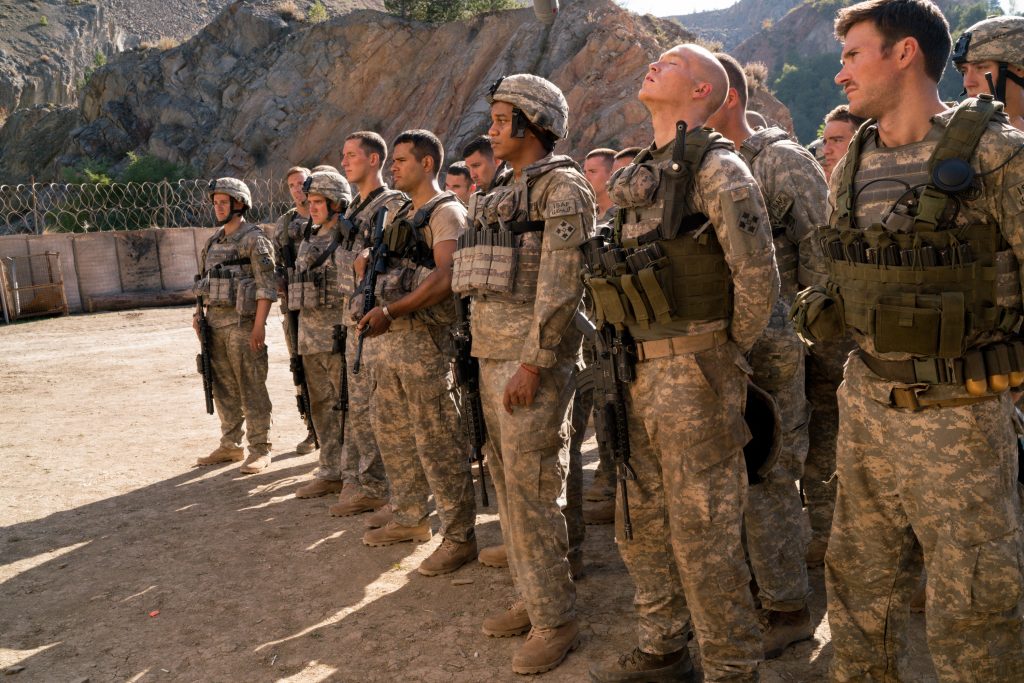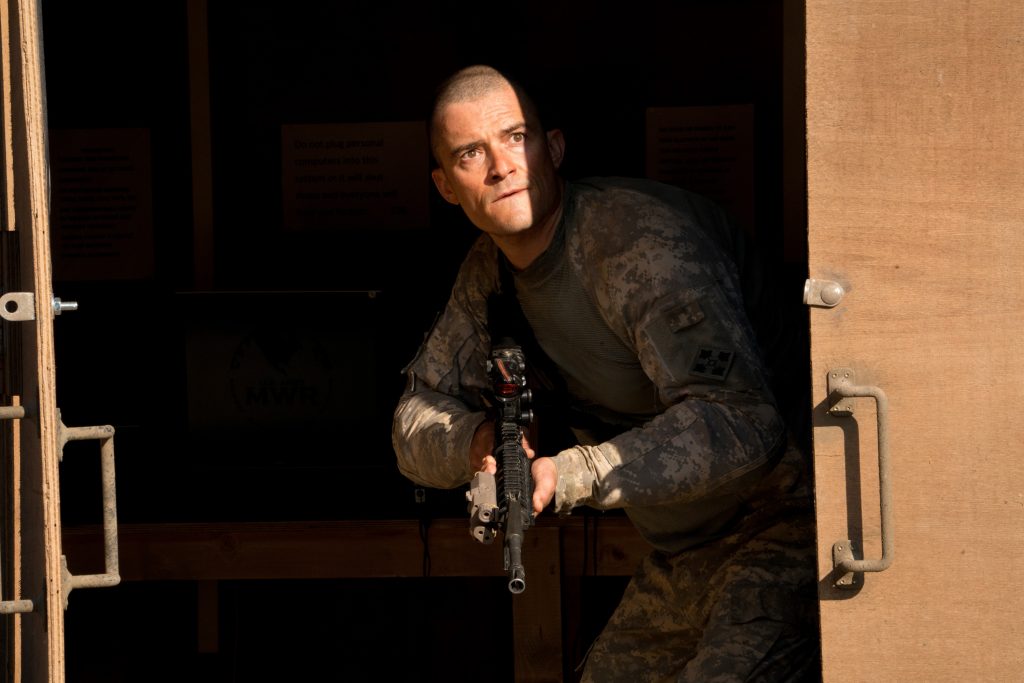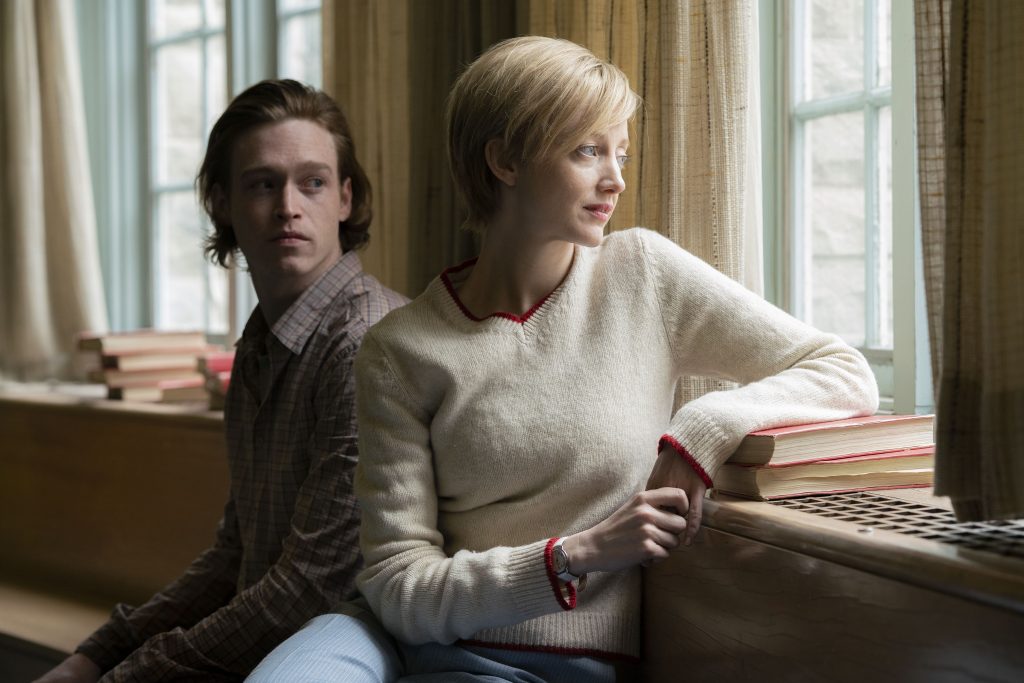July 15, 2022
by Carla Hay
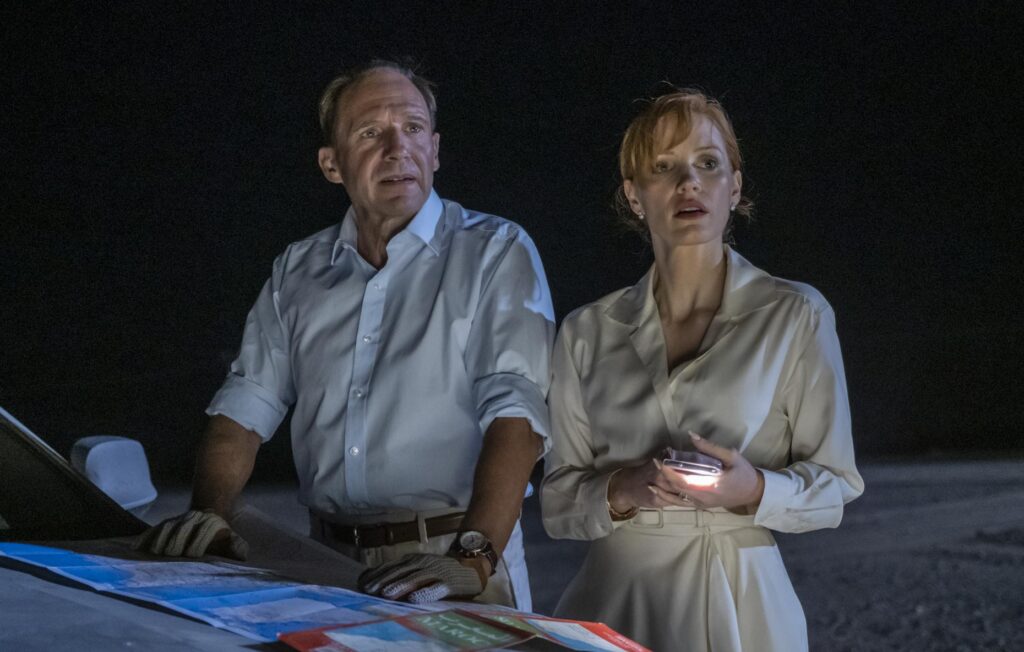
Directed by John Michael McDonagh
Some language in Arabic and Tamazight with subtitles
Culture Representation: Taking place in Morocco’s Atlas Mountains area and the city of Tangier, the dramatic film “The Forgiven” features a cast of white and Middle Eastern characters representing the working-class, middle-class and wealthy.
Culture Clash: While on vacation in Morocco, two unhappily married, upper-middle-class spouses (he’s British, she’s American) are involved in a drunk-driving car accident that kills a teenage boy, and they use their privilege to avoid being arrested for the crime but must face judgment from the boy’s father.
Culture Audience: “The Forgiven” will appeal primarily to people who are fans of stars Ralph Fiennes and Jessica Chastain, as well as to viewers who are interested in tension-filled movies about people who have conflicts with laws and customs in foreign countries.

The dramatic film “The Forgiven” doesn’t flow as well as it should for a piercing look at spoiled and entitled people who use their privilege as a weapon and as a shield. However, the performances are worth watching to see how terrible people can be their own worst enemies. In other words, “The Forgiven” is not a “feel good” movie. Be prepared to witness a lot of self-absorbed and insufferable conduct from snobs and bigots who think a lot of “real world” rules and manners don’t apply to them unless they can get something out of it.
Written and directed by John Michael McDonagh, “The Forgiven” is based on Lawrence Osborne’s 2012 novel of the same name. The movie has the tremendous benefit of a talented cast that can turn some of the soap opera-ish dialogue and make it into something resembling a satire of the pompous characters who cause the most damage. Although the story is fictional, there are plenty of real-life examples of people who act this way. “The Forgiven” had its world premiere at the 2021 Toronto International Film Festival and its U.S. premiere at the 2022 Tribeca Film Festival in New York City.
The movie’s opening scene sets the tone for the unpleasantness to come. British oncologist David Henninger (played by Ralph Fiennes) and his American wife Jo Henninger (played by Jessica Chastain), who live in London, have arrived in Tangier, Morocco, to attend an Atlas Mountains party thrown by a wealthy gay couple whom David and Jo have known for an unnamed period of time. David and Jo have no children and have been married for 12 years. But it only takes a few minutes into the movie before their bickering starts.
David thinks Jo is a shrewish nag. Jo calls David a “high-functioning alcoholic.” He responds by saying that “high-functioning” cancels out “alcoholic.” David knows that Jo is correct because he really is an alcoholic. If David is awake, chances are he’s drinking alcohol. And his alcoholism is a direct cause of the car accident that results in a tragedy.
Later, it’s revealed in the movie that Jo is a children’s book author whose books have never been bestsellers. She also hasn’t written any books for the past eight years. It’s unknown if frustrations over her career and marriage have made Jo such a bitter person, or if Jo already had this type of personality before she married David. However, what’s obvious is that Jo and David are both deeply unhappy people—together and apart.
Before David and Jo arrive at their party destination, the movie shows a scene of two Moroccan teenage boys (who are about 15 or 16 years old) in a cliff area of Atlas Mountains. One of the boys is sniffing glue from a plastic bag. Viewers later find out that his name is Driss Taheri (played by Omar Ghazaoui) and that he and his friend Ismael (played by Aissam Taamart) sell fossil rocks as a way to make some money.
As Ismael hammers at some rocks to find fossils, Driss scolds Ismael for never leaving their village or never having ambitions to leave for bigger and better things. Ismael replies by saying that he doesn’t have the money to leave. Driss says there’s always a way to get money. Poverty in this community becomes a big issue later on in the story.
“The Forgiven” then shows David and Jo in their rental car going from Tangier on the way to the party in the High Atlas Mountains. It’s nighttime on a deserted road, and David is driving, although he probably shouldn’t be driving, because he’s more than likely well past the alcohol legal limit to drive. Jo and David get lost and are arguing some more when tragedy strikes: The car hits a teenage boy who suddenly appears in front of the car on the road. He is killed instantly.
Meanwhile, viewers see several people who are gathered for this house party. The party hosts are wealthy British real estate developer Richard Galloway (played by Matt Smith) and his American boyfriend Dally Margolis (played by Caleb Landry Jones), a very pretentious couple who threw this party mainly to show off some of their wealth. The home where Richard and Dally are having this multi-day party is big enough that most of the guests (including Jo and David) will be staying overnight on the property.
With the guests gathered in an outdoor patio area, Richard gives a speech bragging about all the fine delicacies and luxuries that the guests can see and enjoy during this soiree. He adds, “We hope you’ll find this place a vision of paradise, a place in which to receive the people we love.” It’s a very shallow speech because it’s questionable if anyone in this group of partiers really loves each other.
Richard then says, “And don’t forget the figs—typically representative of a woman’s vagina.” Dally, who is standing near Richard, giggles in response: “Or so we’ve been told.” This is the type of dialogue that’s in a lot of “The Forgiven.” It’s indicative of how some people who are rich when it comes to money and property can still lack class.
Other guests at the party also conduct themselves with an air of jaded superiority at being in this luxurious environment. Financial analyst Tom Day (played by Christopher Abbott) is a smirking and lecherous American, who tells Richard: “I’ve got three girlfriends. They all hate me.”
Cody (played by Abbey Lee), who is also American, is the requisite modelesque-looking “party girl” who’s often too intoxicated to comprehend where she is and what she’s doing. When Cody dances drunkenly near Tom, he tells her that his wife left him because she ran off with a hedge fund manager. Later in the movie, there’s a random and very out-of-place scene of Cody wandering around lost in the desert on the day after the party started.
French photographer Isabelle Péret (played by Marie-Josée Croze) takes photos at the party and has a mild flirtation with Tom when they have a conversation. Leila Tarki (played by Imane El Mechrafi) is an independent filmmaker whom Isabelle greatly admires. At the party, Isabelle points out Leila to Tom and describes Leila as “the Moroccan auteur. She’s the coolest.” Isabelle also mentions that Leila is in Morocco to raise funds for Leila’s new movie, which will be about nomads.
Maisy Joyce (played by Fiona O’Shaughnessy), whose occupation or social purpose is never stated, is a gossipy guest who makes low-key snarky comments about everyone she observes. When she meets Tom, she bluntly asks him: “Are you gay?” Tom replies, “No, but I fucked a man who is.” Tom is the type of person who doesn’t make it clear if he’s telling the truth or if he’s joking when he makes this type of statement.
Later, two other party guests show up: middle-aged playboy William Joyce (played by David McSavage) and Maribel (played by Briana Belle), one of William’s much-younger trophy girlfriends. All of these party guests, except for David and Jo, end up being backdrops to the drama that unfolds because of the car accident. It should come as no surprise that the party continues as planned, even though the dead boy’s body is temporarily brought to the house.
Richard gets a call from David during the party and hears the horrible news about the car accident and death. David and Jo are in a panic because they’re afraid of being arrested for the death of this child, whom they say has no identification. Richard reluctantly allows Jo and David to come over to the house, so they can talk about what to do next. The body of the boy has been put in their car.
Richard sends his most trusted employee Hamid (played by Mourad Zaoui) and some other servants to escort David and Jo back to the house. Hamid can speak Arabic and English, so he acts as the main translator in this story. He also advises the Westerners about Moroccan and Muslim customs and traditions.
Dally is very nervous and thinks that he and Richard shouldn’t get involved in this car accident case, but Richard thinks that the local police can be bribed if necessary. Richard and David are also alumni of the same elite university (which is unnamed in the movie), so Richard feels obligated to help David. Richard mentions this alumni connection on more than one occasion, such as when Richard repeats stories he heard about David being a notorious troublemaker at the school.
Richard tells some people that one of the stories he heard was that David went on top of a building to drop mice wearing miniature Nazi flags on some school officials. The mice died, of course. Whoever committed this disturbing act was never caught, but David was widely believed to be the culprit. It was apparently someone’s warped way telling these school officials that they act like Nazis. And if David was the culprit, it’s an example of how he’s been an awful person for a very long time.
Before the police are called about the car accident and death that David caused, Richard advises David and Jo to act as remorseful as possible to increase the chances that they won’t be charged with any crime. Jo is willing to take that advice, but David balks at the suggestion because he doesn’t think he did anything wrong. David blames the boy for being out in the road at night.
And it isn’t long before David’s story begins to morph into saying that the boy was probably trying to commit a carjacking. David and Jo, on separate occasions, also express fear that this car accident victim could have been an ISIS terrorist. It’s blatant racism, but racists like David and Jo don’t care.
The police arrive and take statements from David and Jo. The chief investigator is Captain Benihadd (played by Ben Affan), who quickly determines (within 15 minutes) that the death was an accident and that David and Jo won’t be arrested. David doesn’t get asked to take a sobriety test or any test that would detect the level of alcohol or drugs in his system. Viewers with enough common sense can easily see why David doesn’t get much scrutiny by police who want to be deferential to people who appear to be rich.
After it’s declared that David and Jo won’t be arrested, Richard’s relief turns to dismay when he finds out that because the morgue won’t be open until the next day, the body has to stay on Richard’s property until it can be transported to the morgue. As far as Richard is concerned, it puts a damper on the party. Richard, Dally and David aren’t as concerned about how this child victim belongs to a family who will eventually hear the devastating news about his death. Jo shows a little more compassion and guilt, but not enough to erase her racism, since she automatically makes the racist assumption that the boy who was killed could be a member of ISIS.
Even though the police didn’t find any identification for the boy, and none of the people who saw his body say they know him, he does have a name: Driss Taheri. David, Jo and the other people at Richard’s house who know about this death will eventually find out Driss’ name. But even after they find out his name, they often won’t say it, as if it’s easier to think of him as nameless and unwanted. Privately, David makes this callous remark to Jo, “I hate to say it, but the kid is a nobody.”
The next day, David is riding horses with Isabelle and Macy, as if they don’t have a care in the world. A few Moroccan boys suddenly appear and throw rocks at David before the boys run away. One of the rocks hits David on the head hard enough that he gets a bloody injury on his head, and he falls off of the horse. The injury is not serious enough for him to go to a hospital though.
David nastily complains to Jo that people in the community must have found out that he was the one who caused the death of a local child. David shows more of his racism and xenophobia when he says, “They’re insatiable gossips. It’s a function of being illiterate.” Jo sarcastically replies, “What a nice little facist you’ve become since being hit by a stone.”
The way that these self-centered partiers find out Driss’ identity is when his grieving and distraught father Adbdellah Taheri (played by Ismael Kanater) shows up the next day at Richard’s house to claim the body and to talk to the people responsible for Driss’ death. Driss was his only child. (Driss’ mother is not seen or mentioned in the movie.)
With Hamid acting as a translator, David finds out that Adbdellah wants some kind of payment from David to compensate for Driss’ tragic death. Adbdellah initially didn’t want any payment, but he changes his mind when he sees that David seems very cold and uncaring about killing Driss. David flatly refuses this demand for payment.
Adbdellah also insists that David accompany Adbdellah back to Adbdellah’s home in the Moroccan region of Tafilalt, to atone for the killing, out of respect for Muslim tradition. David reluctantly agrees to this request, even though he and Jo are paranoid that it could be a trap set by “ISIS terrorists.” David goes on this trip because he also thinks it will get Adbdellah to stop expecting money from David.
The rest of “The Forgiven” shows what happens during David’s “atonement” visit, what Jo does when David is away, and the aftermath of decisions and actions that are made. The movie has flashbacks to the moments immediately before and after Driss was struck by the car and killed. These flashbacks give a clearer picture of who David and Jo really are and how they responded to this crisis.
Fiennes and Chastain give skillful but not outstanding performances as snooty pessimists who are trapped in misery of their own making. It’s never really made clear how long David has been an alcoholic, but he doesn’t have any intention of getting rehab treatment for his addiction, even after causing someone’s death because David was driving drunk. As for Jo, she’s got her own issues, because she feels like a failure who has no purpose in life.
“The Forgiven” is not going to appeal to viewers who are expecting a movie where most of the people are “likable.” The movie holds up a mirror to people who want to project an image of being “glamorous” but they actually have very ugly personalities. There’s a certain point where the movie’s ending is easy to predict. Considering all the clues pointing to this ending, it doesn’t feel like a shock but like something that was bound to happen.
Vertical Entertainment and Roadside Attractions released “The Forgiven” in select U.S. cinemas on July 1, 2022. The movie was released on digital and VOD on July 15, 2022.

